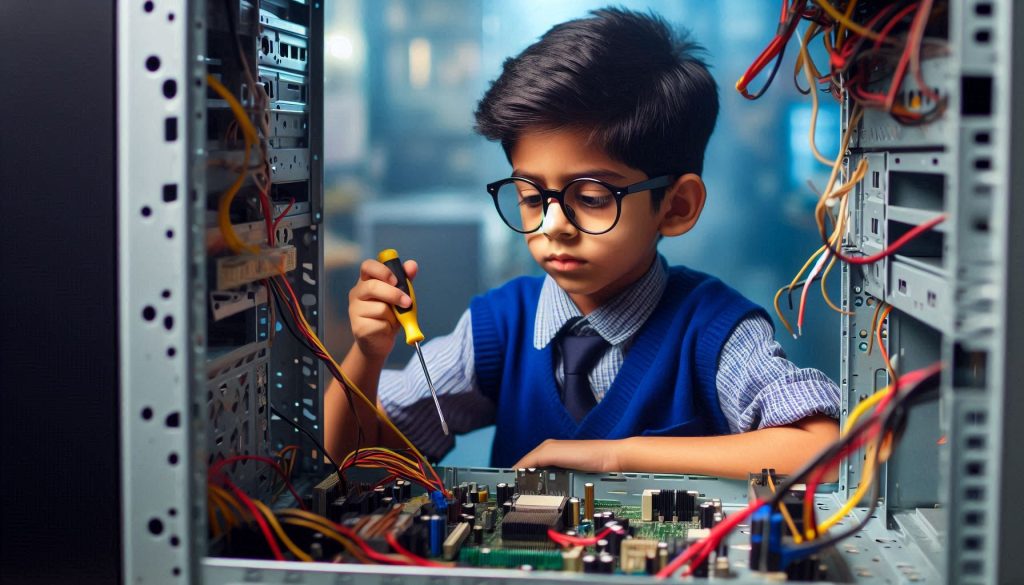Optimizing your Windows 10 PC can improve performance, speed up your system, and extend its lifespan. Here’s a comprehensive guide to help you optimize your Windows 10 PC:

**1. Update Windows and Drivers
Why: Ensures you have the latest security patches, bug fixes, and performance improvements.
- Check for Updates:
- Go to Settings > Update & Security > Windows Update.
- Click Check for updates.
- Update Drivers:
- Right-click on the Start button and select Device Manager.
- Expand categories, right-click on the device, and choose Update driver.
**2. Manage Startup Programs
Why: Reduces boot time and prevents unnecessary programs from slowing down your PC.
- Open Task Manager:
- Press Ctrl + Shift + Esc.
- Go to the Startup tab.
- Disable Unnecessary Programs:
- Right-click on programs you don’t need at startup and select Disable.
**3. Uninstall Unnecessary Software
Why: Frees up disk space and removes potential software conflicts.
- Uninstall Programs:
- Go to Settings > Apps > Apps & features.
- Select the program you want to remove and click Uninstall.
**4. Optimize Hard Drive
Why: Improves read and write speeds and reduces fragmentation.
- Defragment and Optimize Drives:
- Type defrag in the search bar and select Defragment and Optimize Drives.
- Select your drive and click Optimize.
**5. Clean Up Disk Space
Why: Removes temporary files and frees up storage space.
- Use Disk Cleanup Tool:
- Type Disk Cleanup in the search bar and select the tool.
- Choose the drive you want to clean and click OK.
- Select the file types you want to delete and click OK, then Delete Files.
- Use Storage Sense:
- Go to Settings > System > Storage.
- Toggle Storage Sense to automatically clean up files.
**6. Adjust Visual Effects
Why: Enhances performance by reducing the load on system resources.
- Adjust for Best Performance:
- Right-click on This PC and select Properties.
- Click Advanced system settings.
- Under Performance, click Settings.
- Select Adjust for best performance or manually uncheck visual effects.
**7. Check for Malware
Why: Malware can slow down your system and cause other issues.
- Run a Full Scan:
- Go to Settings > Update & Security > Windows Security > Virus & threat protection.
- Click Quick scan or Full scan.
- Use Third-Party Antivirus:
- Consider using reputable antivirus software for additional protection.
**8. Manage Power Settings
Why: Helps optimize performance based on your power usage preferences.
- Change Power Plan:
- Go to Settings > System > Power & sleep > Additional power settings.
- Select High performance or customize a power plan.
**9. Check for System Errors
Why: Fixes issues that may be affecting system performance.
- Run System File Checker:
- Open Command Prompt as an administrator.
- Type
sfc /scannowand press Enter.
- Run DISM Tool:
- Open Command Prompt as an administrator.
- Type
DISM /Online /Cleanup-Image /RestoreHealthand press Enter.
**10. Optimize Your Browser
Why: Improves browsing speed and efficiency.
- Clear Browser Cache:
- Open your browser’s settings and find the option to clear browsing data or cache.
- Disable Unnecessary Extensions:
- Manage and disable browser extensions you don’t use.
**11. Upgrade Hardware
Why: Enhances performance if your PC is struggling with current hardware.
- Add More RAM: Improves multitasking capabilities.
- Upgrade to SSD: Significantly boosts boot times and data access speeds.
- Update Graphics Card: Improves performance for gaming and graphics-intensive tasks.
**12. Restart Regularly
Why: Ensures your system runs smoothly and clears temporary issues.
- Reboot Your PC: Regularly restart your computer to clear memory and apply updates.
Conclusion
Optimizing your Windows 10 PC involves a combination of software management and hardware upgrades. By following these steps, you can enhance your system’s performance, improve speed, and ensure a smoother computing experience.
Feel free to use this guide to help improve the performance of your Windows 10 PC, and if you need any further assistance, don’t hesitate to reach out!

